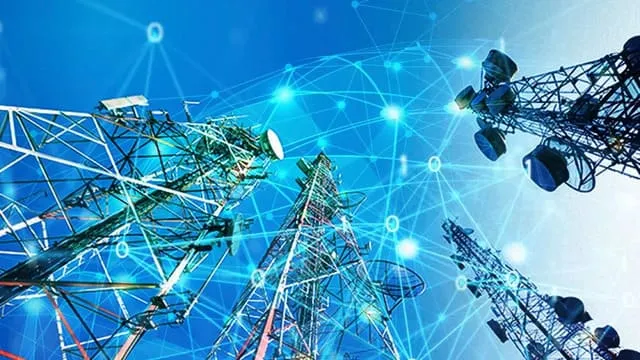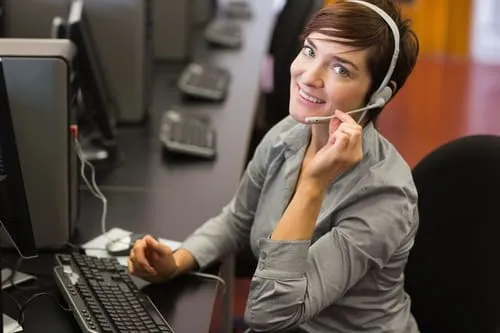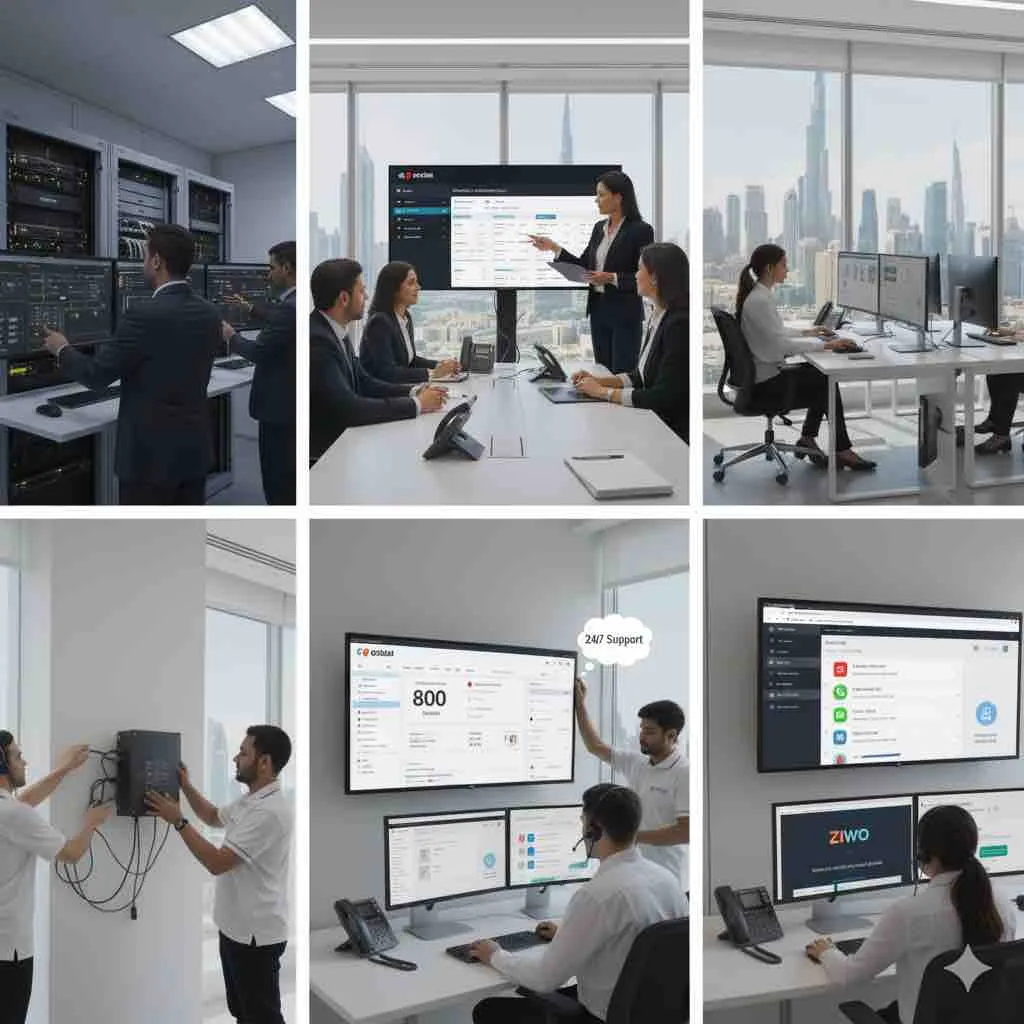Customer Data Security in Call Centers: Best Practices for Compliance
Call centers handle a wealth of sensitive customer information daily, making data security a top priority.
Sept. 24, 2023, 3 min read,

Branch connectivity is a crucial aspect of modern business operations. It refers to the network infrastructure and technology solutions that connect branch offices, remote locations, or satellite offices to the central headquarters or data center. In this article, we'll delve into the concept of branch connectivity, its significance, and the technologies that make it possible.
Branch connectivity is all about ensuring that remote locations or branch offices are seamlessly integrated into the larger corporate network. This integration enables efficient data sharing, communication, and collaboration across different geographical locations. Here are some key components of branch connectivity:
1. Data Exchange: Branch connectivity facilitates the exchange of data and information between branch offices and the central data center. This is essential for real-time access to critical business data and applications.
2. Communication: It enables voice and video communication between branch offices and headquarters. This is vital for conference calls, collaboration, and customer support.
3. Security: Ensuring the security of data transmitted between branches and headquarters is a top priority. Branch connectivity solutions often include robust security measures like encryption, firewalls, and intrusion detection systems.
4. Scalability: As a business grows, its branch connectivity needs may change. Scalability is a key feature, allowing organizations to expand and adapt their network infrastructure as required.
Several technologies play a significant role in establishing and maintaining branch connectivity:
1. Virtual Private Networks (VPNs): VPNs create secure, encrypted connections over public networks like the internet, enabling branch offices to securely communicate with the central data center.
2. Multiprotocol Label Switching (MPLS): MPLS is a routing technique used by service providers to create private, high-performance connections between branch offices and the central network.
3. Software-Defined Wide Area Networking (SD-WAN): SD-WAN technology optimizes and manages network traffic across multiple branches, enhancing performance and reducing costs.
4. Cloud-Based Solutions: Many organizations are moving their applications and data to the cloud. Cloud-based solutions allow branch offices to access these resources efficiently.
5. Remote Desktop Services (RDS): RDS solutions enable branch offices to access central servers and applications remotely, providing a consistent user experience.
6. Voice over IP (VoIP): VoIP technology allows for voice communication over the internet, reducing costs and enhancing communication between branches.
Effective branch connectivity offers several advantages:
- Improved Efficiency: Branch offices can access central resources, data, and applications quickly and reliably, improving overall operational efficiency.
- Cost Savings: By optimizing network resources and using technologies like SD-WAN, organizations can reduce connectivity costs between branches.
- Enhanced Collaboration: Branch connectivity fosters collaboration among teams spread across different locations, promoting innovation and teamwork.
- Scalability: As organizations expand, branch connectivity solutions can easily scale to accommodate additional locations and users.
In conclusion, branch connectivity is the lifeline that keeps geographically dispersed organizations connected, productive, and competitive. By leveraging the right technologies and solutions, businesses can build a robust branch connectivity infrastructure that supports their growth and operational needs.
Call centers handle a wealth of sensitive customer information daily, making data security a top priority.

With the rise of Artificial Intelligence (AI), companies are finding innovative ways to revolutionize their customer feedback services

Embracing Technology for Enhanced Patient Care

Customer service is not just about solving problems and answering questions; it's also about understanding human psychology and emotions. Call centers are at the forefront of this intricate interaction, where every conversation can impact customer satisfaction. In this article, we delve into the psychology of customer service and how call centers can harness it to leave customers delighted.

In this article, we'll explore the key strategies that can transform your training program and empower call center agents to excel in their roles.

In this article, we'll explore the pros and cons of each approach to help businesses make an informed choice.

Get know about The Internet of Things (IoT): Connecting the Smart World

In this article, we will delve into the crucial role of DNS in the internet, its function, and its significance in simplifying our online experience.

Voice over Internet Protocol (VoIP). what you should know about it.

Do you need to install a server in your place or do you need outsourcing?

Technical services for installing and setting up servers and supporting servers such as HP and Dell at your' place

video surveillance setups, CCTV gear with setup and installtion services.

In today's globalized business landscape, powerful communication and customer service are vital for achievement.

One question many business owners often wonder is whether they need a call center solution.

It's crucial to understand the essential software and equipment required to set up a call center. In this article, we'll walk you through the key components you need to establish a functional call center.

IPv4 vs. IPv6: Navigating the Transition to the New Internet Protocol

In today's world, fast internet is important. There are two common ways to get it: Fiber-to-the-Home (FTTH) and Digital Subscriber Line (DSL).

Acronyms like DSL and VDSL often leading to confusion about their meanings and capabilities. Are they the same thing? Or do they represent distinct technologies?

In this article, we'll dive into the world of call center performance measurement and explore the critical metrics that drive success.

"This has been by far the worst airline call center experience I've ever had"

Explore the latest advancements in access control technology, from IoT integration and touchless entry to biometric authentication and AI-driven automation, ensuring robust and efficient security solutions for modern workplaces.

In a fast-paced digital world, where communication and technology are vital, ArcNet stands as your reliable partner for all your IT and Telecom needs.

Enhance your business communication with ArcNet’s cutting-edge Call Center Solutions in Dubai, UAE. From advanced software to customized projects, we empower businesses with scalable, efficient, and cost-effective call center services tailored for success.

Discover how custom IT applications are reshaping the landscape of education, fostering innovation, accessibility, and collaboration.

Deliver exceptional customer service and improve agent efficiency with our Call Center Solution, available on-premise or in the cloud

Structured cabling refers to the standardized, organized, and comprehensive cabling system that serves as the foundation for all communication networks within a building or campus....

Building connections that matter — discover how to set up a powerful call center in Dubai with the right technology, people, and local expertise

Here’s a simple breakdown of on-premise vs. cloud contact centers — setup time, costs, scalability, and compliance tips to help you choose what fits your business best.

Find the perfect call center setup for your Dubai business — scalable, bilingual, and built for UAE success with ArcNet.
